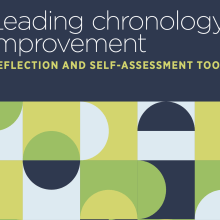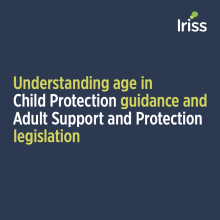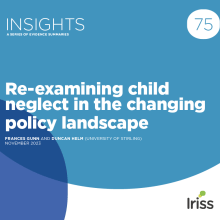Key points
- The terms ‘non-engagement’ and ‘non-compliance’ describe deliberate behaviours that aim to reduce professional intervention.
- The term ‘disguised non-compliance’ in social work refers to uncooperative and hostile behaviours from parents, initially masked by a short period of cooperation that seeks to draw practitioners' attention away from any concerns.
- Disguised non-compliance is not a well-defined or commonly understood term.
- There is currently no research that identifies the reasons for disguised non-compliance. Consequently, risk assessments or subsequent interventions may not be proportionate to what is required to protect children.
- To understand the reasons for non-compliance, social workers need to ask whether parental feelings of shame come into play, shaped by dominant socio-political discourses which stress individual failings, not social inequality and injustice.
- Subtle forms of discrimination can come into play. For example, parents experiencing multiple adversities might be seen and labelled as a group that commonly exhibits behaviours associated with disguised non-compliance.
- Disguised non-compliance can impact social workers' decision-making, focusing on parental behaviours without taking other factors into account.
- There should be a greater focus on shared parent-professional responsibility for successful engagement and for social workers to have a more critical understanding of socio-economic context and how power (and shame) shapes this.
- An exclusive and separate focus on the child's needs to address risks is needed. A position of 'respectful uncertainty' should be maintained in assessing risk and the interconnected factors which contribute to the complexity of decision-making in child protection.
Introduction
How we talk about parent-professional relationships is an underdeveloped area in social research. This is particularly true for 'disguised non-compliance’ in social workers' interactions with parents, with particular challenges in a child protection context.
Within the scope of this Insight, disguised non-compliance is considered more complex than direct non-engagement. This summary suggests that discourses around disguised non-compliance reinforce narratives that pathologise individuals – see or treat them as psychologically abnormal – and go little beyond identifying behaviours suspected to be indicators of non-engagement. A qualitative analysis of existing research explored and challenged these concepts for deeper reflection on the knowledge and experiences of parents and professionals, who are subject to and involved in child protection interventions (Clarke and Hoggett, 2019; Berger, 2015).
Arguably, the term ‘disguised non-compliance’ describes a concern about non-engagement more accurately than ‘disguised compliance’. In this Insight, ‘disguised non-compliance’ is the primary focus.
The child protection context
Social workers’ role in child protection can be seen within the wider policy and legislative context of helping families meet their child’s needs through the Scottish Government’s national approach, Getting it Right for Every Child (GIRFEC) (Scottish Government, 2012). GIRFEC aims to improve outcomes and the wellbeing of all children and young people across Scotland, legislated through the Children and Young People (Scotland) Act 2014. The Practice Model guides workers to reflect on the child, their family, and the wider circumstances to assess the level of risk, need for support, and to adjust the Child’s Plan to reflect progress on the child’s outcomes and development.
While the primary objective of child protection is to ensure the safety of children and young people, ethical practice requires that parents are provided with opportunities to effect positive change and are supported in this process (Ward and colleagues, 2014). Social workers must provide such opportunities within the child’s developmental timeframe. Where risk is identified in assessments, those involved in the child’s life will collaborate to address concerns and improve outcomes, often facilitated by a Child Protection Planning Meeting (CPPM)1. The CPPM must decide whether the child is at risk of significant harm and requires a co-ordinated, multidisciplinary Child Protection Plan (CPP). It is also where a decision is made about whether a child’s name should be placed on the Child Protection Register (CPR). CPPs can be used to address known risks and to support the family, in line with the National Guidance for Child Protection in Scotland (Scottish Government, 2021a).
The Children’s Social Work Statistics Scotland 2020-21 reported that of the 6,374 concerns identified at Child Protection Case Conferences, approximately 8.5% were due to a ‘non-engaging family’ (Scottish Government, 2022, p17).
Practice and discourse: challenges defining the terms
‘Disguised compliance’ was first coined by Reder, Duncan and Gray, a psychiatrist, psychologist and social worker, who reviewed 35 serious child abuse inquiries in England (Reder and colleagues, 1993). They found that parents appeared cooperative to neutralise a professional’s authority and reduce statutory involvement, ultimately delaying an accurate assessment of risk for the often unseen and unheard child (Brandon and colleagues, 2008). As a result, the term ‘disguised non-compliance’ was introduced to describe the behaviours of adults responsible for the care of their child who appeared to undermine child protection procedures and who sought to reduce professional involvement. Reder and colleagues (1993) also found that disguised non-compliance was commonly shown by parents who had a poor sense of control over difficulties impacting their quality of life and had an apparent urge to regain some control within the parent-professional relationship.
Disguised non-compliance is recognised as one of the most challenging forms of non-engagement to identify and respond to in practice (Akehurst, 2015; Tuck, 2013). Some literature offers a general understanding of disguised non-compliance but fails to define the term, leaving it open to interpretation (Littlechild, 2020; Ferguson, 2009). In the limited number of discussion papers where the meaning of disguised non-compliance is examined, researchers commonly refer to the National Society for the Prevention of Cruelty to Children (NSPCC), which embraces the concept of disguised non-compliance (Leigh and colleagues, 2020; Littlechild, 2020; Robinson and colleagues, 2018 and 2019). The NSPCC defines this concept through parental behaviours, suggesting that parents may appear cooperative when working with professionals to reduce concerns and professional involvement (NSPCC, 2019). Synonyms are frequently used in literature to describe parents who may conceal their disagreement with social work. These words include: ‘deceitful’, ‘manipulative’, ‘passive’ and ‘evasive’ (Littlechild, 2020; Sidebotham and colleagues, 2016; Tuck, 2013; Ferguson, 2009). Disguised non-compliance is regularly associated with highly resistant and hard-to-reach parents (Smithson and Gibson, 2017; Forrester and colleagues, 2012; Shemmings and colleagues, 2012; Turney, 2012; Turnell, 2006). However, inconsistent use of language adds to the complexity of understanding disguised non-compliance. Thus, researching how disguised non-compliance is perceived in practice may be essential to understanding non-engagement.
The recently updated National Guidance for Child Protection in Scotland (Scottish Government, 2021a), highlights ‘resistance’ and ‘disguised compliance’. This is ‘usually meaning disguised non-compliance or non-effective compliance, terms sometimes used when services find it hard to engage with families’ (p133). The guidance also outlines that ‘non-engagement on the part of service users may take the form of aggression, manipulation, concealment, superficiality, blaming and ‘splitting’ professionals, inaction or selective action’ (p133). Importantly, it acknowledges that terms used to describe disguised compliance ‘imply that the location of responsibility for this block lies with children and families’ (p.133).
Significant Case Reviews (SCRs) (recently updated to ‘Learning Review’ (Scottish Government, 2021b) have contributed to an awareness of disguised non-compliance. Parents’ behaviours have emerged as a key theme, in particular how parents appear to engage with a Child Protection Plan (Coventry Local Safeguarding Children Board, 2013; Renfrewshire CPC, 2012; Jones, 2009). A report published by the Care Inspectorate in 2019 into SCRs from 2015-2018, also identified ‘a lack of effective and proactive challenge’ by professionals and that ‘not recognising or responding appropriately to behaviour of non-engagement, ambivalence or disguised compliance was a feature identified in 10 of the 25 SCRs’ (p19).
The impact of poverty and shame
There appears to be a disproportionate number of children’s names on the CPR within the most deprived areas across Scotland compared to those living in more affluent areas (Scottish Government, 2020). The National Guidance for Child Protection (Scottish Government, 2021a) acknowledges the role of poverty and that ‘practitioners should be careful not to stigmatise families through highlighting the impact of poverty in families. However, poverty can cause, as well as accelerate neglect and the risk of other harms’ (p132).
Poverty also has a critical psychological dimension – the experience of shame appears central to those living in poverty. Chase and colleagues (2013) articulate the co-construction of shame (feeling shame and being shamed) and how individuals living in poverty have an acute awareness of how this can arise from social interaction. They found that people may protect themselves from shame by withdrawing from social interactions that can expose their hardship and, instead, present themselves as though they are coping when they are not. This is further examined by Gupta and Blumhardt (2016), who suggest that the role of shame in avoidance creates the potential for a divide between parents and professionals within a child protection context. A parent described their experience of a CPCC:
“You’re sat there around a table with [professionals] who have been trained to do certain things, but you’re not trained… And, of course, your defence mechanism goes up and you instantly defend your own corner but that sometimes comes across as you [are] being rude, arrogant, or not understanding and having a lack of insight.” (Gupta and Blumhardt, 2016, p166)
This demonstrates how preconceived ideas can contribute to a parent’s unwillingness to meaningfully communicate with social workers, and lead them to exhibit behaviours professionals perceive as non-compliant. Gibson (2020) associated this understanding of disguised non-compliance with unhelpful attempts to cope with shame in a child protection context. They suggest that individuals may respond with behaviours that seek to please professionals and which attempt to manage and protect them from experiencing shame within the parent-professional relationship. In the context of child protection, this raises concerns, as motivation is disproportionately focused on gaining social acceptance by pleasing the social worker and not meeting the child’s needs, which leads to a false sense of progress. This prompts reflection on the practitioners’ role of maintaining disguised non-compliance – being responsible for meaningful engagement through the provision of support and recognising how experiences of shame can affect the relationship.
What we still don't know: gaps in the research
While it’s important to remain curious about the possibility that some parents are being dishonest to reduce professional involvement, we need to go further and provide a robust description of how and why disguised non-compliance might be occurring. There are clear gaps in the evidence base and we need more research to understand what disguised non-compliance looks like, what causes it, and what role it plays in decision-making for families subject to child protection interventions.
Practice issues
Assessing risk and progress
Reder and colleagues (1993) identified disguised non-compliance through parental behaviours and outlined the importance of professionals critically evaluating information received from parents in the context of daily practice. This was also later highlighted in Lord Laming’s report (2009).
Social workers’ perception of parents’ openness to engage with them affected their assessment of risk to the child (Cook, 2017). One case, in particular, was closed ‘despite a long history of similar concerns’ (p437). Cook suggests that perceived openness can lead to the misjudgement of risk if ‘relied upon uncritically’, increasing the risk of missed ‘instances of disguised [non-]compliance’ (p437). A report of learning from SCRs (2012-2015) published by the Care Inspectorate (2016), identified a common theme where the quality of engagement was often overlooked if parents did not present as ‘overtly hostile’. This missed opportunities to identify disguised non-compliance. In these instances, parent behaviours are used to identify disguised non-compliance, however, its application seems to fail to acknowledge that parents may always find it difficult to meet and engage with social worker expectations.
Leigh and colleagues (2020) suggest that the application of disguised non-compliance in practice has shifted as it fails to acknowledge a predicament for parents where their willingness to engage is underestimated and integrity questioned. They suggest that the notion of disguised non-compliance undermines the complexities of risk, as it frames parents’ behaviours as suspicious.
From the literature review and Cook’s study, a common understanding emerged that indicates that disguised non-compliance is a term used in practice to express concerns about a parent’s behaviour throughout the engagement and assessment process. However, when closely examined, it could be suggested that disguised non-compliance minimises the complexity of risk in child protection. While progress has been made in relation to understanding disguised non-compliance critique (Leigh and colleagues, 2020), its interactional aspects remain unclear, particularly in child protection where the implications for child well-being are so pronounced.
The parent-professional relationship
Parents who were suspected of being dishonest (Cook, 2017) or seemed to interrupt social workers’ focus on the child, had a negative impact on social work perceptions. Parents were described as angry (Ferguson, 2016) and violent (Jackson and colleagues, 2020). Responsibility for successful engagement was placed on the parent rather than it being a parent-professional responsibility. Mason and colleagues (2020, p12) provide one parent’s view:
“…you can’t work with [social work] because they’re too full-on sometimes. But if you tell them that they’re too full on, it goes against you, and you’re scared of what to say and what to do around [social workers] …”
Disguised non-compliance could be seen as an attempt to cope with the fear of challenging those in a position of power – where parents comply with a social worker’s demands in order to disguise a potential sense of inadequacy. If social workers are seen to be using power to pathologise rather than help parents, they may play a role in exacerbating non-engagement.
In these situations, the power struggle perhaps becomes the focus of the parent-professional relationship, which may hinder the purpose and aims of intervention. This calls for social workers to have a critical view of the parent-child relationship, rather than their relationship with the parent or an almost exclusive focus on the child. This finding may also reflect the challenging role of social work in child protection – the parent’s needs can be complex in addition to the child’s needs. While it might concern some that a focus on parents’ needs will compromise a focus on the child, it could be argued that seeing the child and parent separately can be unhelpful – viewing the child relationally is a critical component of assessing and managing risk (Horwath and Platt, 2018).
Understanding disguised non-compliance and decision making
Lord Laming’s (2003) inquiry report into the death of Victoria Climbié comments that the risk of manipulation by the parent must contribute to decision-making when there are concerns about the safety of the child. The report recommends that social workers adopt a position of ‘respectful uncertainty’ when considering information provided to them.
Some social workers developed an almost exclusive focus on the child, to the point where socio-economic circumstances were marginalised as a critical area of exploration in decision-making:
“[D]oes poverty impact my decision making? No, it doesn't. What impacts my decision-making about families is how they are parenting and what they are able to provide their child with.” (Social worker in Morris and colleagues, 2018, p368).
This demonstrates a conscious detachment from the effects of poverty which can limit opportunities for supportive work with parents as enshrined in GIRFEC (Scottish Government, 2012). Morris and colleagues (2018) also found that parenting was decontextualised to avoid stigmatising families who appear vulnerable. This was echoed in the way parents often believed that professionals had a narrow focus on their inability to parent (Jackson and colleagues, 2020). Jackson also found that parents perceived CPCCs to be ‘disciplinary mechanisms’ where their role in decision-making was described as marginalised by professional actions:
“… Obviously, [social work] have to be strict and that’s because some people just don't listen.” (Parent, Jackson, 2020, p425).
The notion of disguised non-compliance may have developed into a catch-all term to identify parents who social workers have struggled to work with. This is not primarily due to non-engagement but perhaps to the professional discourse of disguised non-compliance. In SCRs, social workers became more focused on parents’ needs rather than the risks and needs of the child. In this context, it is understandable that a social worker ensured they remained child-focussed (Gibson, 2020, p224):
“I think I do subconsciously try to make an effort to not let a parent’s views overtake the views of the children.”
However, what is evident in the research is that sometimes, social workers will have an almost exclusive focus on the child rather than considering what is increasing parent non-engagement.
It is essential to recognise that these findings highlight many interconnected factors, including organisational constraints, broader social and political discourses, and professional judgement. These contribute to the complexity of decision-making in child protection. The behaviours of parents who were perceived to be non-engaging were not discussed in depth. As a result, an understanding of what maintained the behaviours was articulated less in the research. You could suggest that disguised non-compliance can impact decision-making, but it is with the benefit of hindsight that this is recognised; it is disguised and difficult to quantify. This retrospective understanding has an impact on staff: ‘When the non-engagement and resistant behaviour is later recognised and identified, the sense of duplicity and deceit experienced by staff can contribute to almost a feeling of betrayal’ (West of Scotland Child Protection Consortium, 2016).
Parent behaviours and the child’s needs are concrete and recognisable in the assessment of risk that informs decision-making. In contrast, causal factors that maintain risk and behaviours are articulated less, and are less visible in the assessment. In response to Lord Laming’s (2003) view on respectful uncertainty, this finding may prompt professionals to delve deeper – not only to have respectful uncertainty about what parents are saying and doing, but also about their own practice through reflection and self-questioning.
Disguised non-compliance and anti-discriminatory practice
Parents and professionals participated in the research summarised in this Insight, and so whether disguised non-compliance is a challenge exclusive to parents is yet to be known. Nevertheless, this finding reflects the similarity with SCRs, and so, it is perhaps reasonable to suggest that disguised non-compliance does not become a catch-all term that is applied to parents who appear non-engaging, as this may undermine the complexities of risk and the social worker’s role in the engagement process.
Parents experiencing several difficulties and who often cope with feelings of shame and mistrust in unhelpful ways engaged in a way that was characterised by disguised non-compliance. This raises concerns as to what social workers encounter and whether it is tainted by dominating social and political constructs, which equates social injustice with individual failings. The findings suggest that disguised non-compliance can fit a pathologising narrative that decontextualises parenting (Mason and colleagues, 2020; Gibson, 2020; Morris and colleagues, 2018; Gupta and Blumhardt, 2016). If some individuals are more vulnerable to experiencing shame through inequalities and other social disadvantages, it can be suggested that one group in society are more likely to be labelled as disguised non-compliant than another. This does not imply that individuals living in more affluent areas are incapable of experiencing shame, but these experiences could be more poignant when exacerbated by poverty and deprivation in the everyday context of family life.
The question of when compliance becomes disguised non-compliance cannot be answered due to limited insight into what causes disguised non-compliance. Without a deeper understanding, it is questionable how this challenge can be addressed in a way that is anti-discriminatory.
Implications for practice
Reflection and training
The research highlights the need for current understandings of disguised non-compliance to be revised, both in research and practice. Social workers can actively reflect on where the impression of disguised non-compliance comes from through critical habits of self-questioning in their daily practice. Research shows how dominant discourses can impact practice and reinforce a view that being suspicious of parents who appear non-engaging can prevent social workers from reflecting on their role. It also prevents them from considering what they can do to overcome the challenge, rather than labelling a parent’s behaviour. Staff need to be supported to be aware of, and be able to recognise and respond to disguised compliance through training (NSPCC, 2019).
Relationships and recording
There is a need for an analysis of engagement that recognises mutual responsibility of social workers and parents. This might involve social workers reflecting on their relationship skills with parents, and on the dynamics of the relationship, shifting from ‘why are you not complying?’ to ‘what is it about our relationship that makes you feel you don’t want or need to comply?’. A relationship focus is emphasised in the updated National Guidance for Child Protection (Scottish Government, 2021), which describes ‘failures in engagement’ as ‘interactive – a shared responsibility’ (p134). When services find it hard to engage, the following approaches support collaboration: developing a shared sense of purpose, encouraging hope to promote goal-setting, motivational interviewing, solution-focused and strengths-based approaches. These approaches need to be underpinned by ‘careful recording, multi-agency assessment and chronologies’ (Scottish Government, 2021, p134).
Evidence gaps
There is a lack of evidence that helps explain what causes disguised non-compliance, which has significant ramifications for practice. Disguised non-compliance may not be at play – it could be an issue with a characteristic of the social worker or social work profession. This implicates the risk assessments or subsequent interventions, which may not be proportionate to what social workers are dealing with.
Power
If social workers are perceived as using power to pathologise more often than to help parents, they could play a role in exacerbating non-engagement. The focus on the parent-professional relationship could become a power struggle rather than a child protection concern.
Emotional impact and staff support
Working with resistant and non-engaging families can be difficult for staff who might experience a range of emotions – frustration, sense of helplessness, isolation and vulnerability, both on a personal and professional level. As well as providing opportunities for reflection and training, supervisors and managers must create environments that give permission to staff to acknowledge the impact of their work on them as individuals in a way that is non-stigmatising, and which helps lead to increased support in the workplace (West of Scotland Child Protection Consortium, 2016).
Context and complexity
Claims from findings cannot be upheld without further research and evaluation to deepen understanding. This research generalised disguised non-compliance in the child protection field where there are specific challenges, including domestic abuse, drug misuse, alcohol misuse and mental health. However, this should not undermine complexities within the lives of families, but offer insight into how disguised non-compliance can point to an unmet need.
References
- Akehurst R (2015) Child neglect identification: The health visitor's role. Community Practitioner, 88, 11
- Berger R (2015) Now I see it, now I don’t: researcher’s position and reflexivity in qualitative research. Qualitative Research, 15, 2, 219-234
- Brandon M, Belderson P, Warren C et al (2008) Analysing child deaths and serious injury through abuse and neglect: what can we learn? A biennial analysis of serious case reviews 2003-2005. Department for Children, Schools and Families.
- Care Inspectorate (2016) Learning from Significant Case Reviews in Scotland: a retrospective review of relevant reports completed in the period between 1 April 2012 and 31 March 2015. Care Inspectorate
- Care Inspectorate (2019) Learning from Significant Case Reviews in Scotland: March 2015 - April 2018. Care Inspectorate
- Chase E and Walker R (2013) The co-construction of shame in the context of poverty: beyond a threat to the social bond. Sociology, 47,4, 739-754
- Clarke S and Hoggett P (eds) (2019) Researching beneath the surface: psychosocial research methods in practice. Routledge
- Cook L (2017) Making sense of the initial home visit: the role of intuition in child and family social workers’ assessments of risk. Journal of Social Work Practice, 31,4, 431-444
- Coventry Local Children’s Safeguarding Board (2013) Daniel Pelka Serious Case Review
- Ferguson H (2009). Performing child protection: home visiting, movement and the struggle to reach the abused child. Child & Family Social Work, 14, 4, 471-480
- Ferguson H (2016) What social workers do in performing child protection work: evidence from research into face-to-face practice. Child & Family Social Work, 21, 3, 283-294
- Forrester D, Westlake D and Glynn, G (2012). Parental resistance and social worker skills: towards a theory of motivational social work. Child and Family Social Work, 17, 2, 118-129
- Gibson M (2020) The shame and shaming of parents in the child protection process: findings from a case study of an English child protection service. Families, Relationships and Societies, 9, 2, 217-233
- Gupta A and Blumhardt H (2016) Giving poverty a voice: families' experiences of social work practice in a risk-averse child protection system. Families, Relationships and Societies, 5, 1, 163-172
- Horwath J and Platt D (eds) (2018) The child's world, third edition: the essential guide to assessing vulnerable children, young people and their families. London: Jessica Kingsley
- Jackson S, Kelly L and Leslie B (2020). Parental participation in child protection case conferences. Child and Family Social Work, 25, 2, 421-429
- Jones A (2009) Haringey Local Safeguarding Children Board Serious Case Review ‘Child A’. Department for Education
- Laming H (2003) The Victoria Climbie inquiry. London: The Stationery Office
- Laming H (2009) The protection of children in England: a progress report, Vol 330, London: The Stationery Office
- Leigh J, Beddoe L and Keddell E (2020). Disguised compliance or undisguised nonsense? A critical discourse analysis of compliance and resistance in social work practice. Families, Relationships and Societies, 9, 2, 269-285
- Littlechild B (2020) Empowering involvement in child-protection processes: balancing the rights of parents and children in terms of having their voices heard. Children in Social Work–Selected Problems of Social Work, 7
- Mason C, Taggart D and Broadhurst K (2020). Parental non-engagement within child protection services—how can understandings of complex trauma and epistemic trust help? Societies, 10, 4, 93
- Morris K, Mason W, Bywaters P, et al (2018). Social work, poverty, and child welfare interventions. Child & Family Social Work, 23, 3, 364-372
- National Society for the Prevention of Cruelty to Children (2019). Learning from case reviews: disguised compliance.
- Reder P, Duncan S and Gray M (1993) Beyond blame: child abuse tragedies revisited. Routledge
- Renfrewshire Child Protection Committee (2012) Declan Hainey Significant Case Review
- Robinson AL, Rees A and Dehaghani R (2018) Findings from a thematic analysis of reviews into adult deaths in Wales: domestic homicide reviews, adult practice reviews and mental health homicide reviews
- Robinson AL, Rees A and Dehaghani R (2019) Making connections: a multidisciplinary analysis of domestic homicide, mental health homicide and adult practice reviews. The Journal of Adult Protection
- Scottish Government (2012) A Guide to Getting It Right for Every Child, Edinburgh: Scottish Government
- Scottish Government (2014) Children and Young People (Scotland) Act 2014. Edinburgh: Scottish Government
- Scottish Government (2021a) National Guidance for Child Protection in Scotland. Edinburgh: Scottish Government
- Scottish Government (2021b) National Guidance For Child Protection Committees Undertaking Learning Reviews. Edinburgh: Scottish Government
- Scottish Government (2022) Children’s Social Work Statistics Scotland (2020-21). Edinburgh: Scottish Government
- Scottish Government (2020) Scottish Index of Multiple Deprivation 2020. Edinburgh: Scottish Government
- Shemmings D, Shemmings Y and Cook A (2012) Gaining the trust of ‘highly resistant’ families: insights from attachment theory and research. Child & Family Social Work, 17, 2, 130-137
- Sidebotham P, Brandon M, Bailey S et al (2016) Pathways to harm, pathways to protection: a triennial analysis of serious case reviews 2011 to 2014. Department for Education
- Smithson R and Gibson M (2017) Less than human: a qualitative study into the experience of parents involved in the child protection system. Child & Family Social Work, 22, 2, 565-574
- Tuck V (2013) Resistant parents and child protection: knowledge base, pointers for practice and implications for policy. Child Abuse Review, 22, 1, 5-19
- Turnell A (2006) Constructive child protection practice: an oxymoron or news of difference? Journal of Systemic Therapies, 25,2, 3-12
- Turney D (2012) A relationship-based approach to engaging involuntary clients: the contribution of recognition theory. Child & Family Social Work, 17, 2, 149-159
- Ward H, Brown R, Hyde-Dryden G (2014) Assessing parental capacity to change when children are on the edge of care: an overview of current research evidence: Research report. Department for Education
- West of Scotland Child Protection Consortium (2016) Practitioner portfolio working with resistance: improving outcomes for vulnerable children and young people where there Is parental resistance, non-engagement or non-compliance.
Acknowledgements
This Insight was reviewed by Professor Brigid Featherstone (University of Huddersfield), Dr David Wilkins (Cardiff University) & Dr Martin Kettle (Glasgow Caledonian University), Dr Helen Allbutt (NHS Education for Scotland), Scottish Government policy colleagues and subject specialists including social work practitioners Emma Hinton (Scottish Borders HSCP) and Nicky Hunter (Edinburgh HSCP). Comments represent the views of reviewers and do not necessarily represent those of their organisations. Iriss would like to thank the reviewers for taking the time to reflect and provide comments on this publication.
About the author
Neve Togher has worked with vulnerable children and their families in a voluntary and statutory capacity, for several years. Since graduating with a First Class Honours in her Social Work Degree at the University of Strathclyde, Neve has pursued a career in Social Work Children and Families. She remains passionate for understanding how research informs practice, particularly how the professional discourse of ‘disguised compliance’ can affect parent-professional relationships.
Credits
- Series Coordinator: Kerry Musselbrook
- Commissioning Editor: Ellen Daly
- Copy Editor: Michelle Drumm
- Designer: Ian Phillip
1 ‘Child Protection Planning Meeting’ (CPPM) is used in the updated National Guidance for Child Protection (Scottish Government, 2021a) in preference to ‘Child Protection Case Conference’ (CPCC). CPCC will be used in this Insight for references that pre-date 2021.





